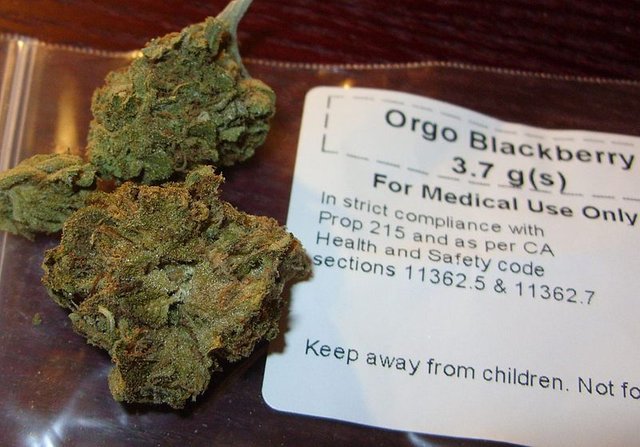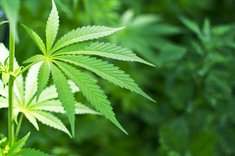Cannabis Benefits

Medical marijuana is legal in 23 states, the District of Columbia and Guam, and recreational use of the drug is legal in Washington State and Colorado.
Marijuana's medicinal uses can be traced back as early as 2737 B.C., when the emperor of China, Shen Neng, touted cannabis tea as a treatment for gout, rheumatism, malaria and even poor memory, writes Mitch Earleywine, a professor of psychology at the State University of New York at Albany who researches drugs and addiction, in "Understanding Marijuana: A New Look at the Scientific Evidence" (Oxford University Press, 2005). The drug's popularity as a medicine spread throughout Asia, the Middle East and then to Africa and India, where Hindu sects used it for pain and stress relief.
William O'Shaughnessy, an Irish doctor, popularized medical use of cannabis in England and America after noting its effects in India.
But by the late 1800s, with morphine addiction rampant in the United States, attitudes towards drugs such as marijuana shifted dramatically. As a result, the Food and Drug Administration was formed in 1906. While marijuana wasn’t specifically mentioned in the original FDA guidelines, the move to control chemical substances curtailed its use as treatment.
By 1937, the Marihuana Tax Act [sic] imposed such high taxes on physicians prescribing cannabis, retail pharmacists selling cannabis, and those cultivating medical cannabis that it essentially fell out of favor as a treatment.

Health benefits
Medical marijuana is available in several different forms. It can be smoked, vaporized, ingested in a pill form or an edible version can be added to foods such as brownies, cookies and chocolate bars.
Because the federal Drug Enforcement Administration has classified marijuana as a schedule 1 drug — meaning it has a high potential for abuse and no legitimate therapeutic uses — it is exceptionally difficult to do high-quality studies on its medicinal effects in the U.S., said Donald Abrams, an integrative medicine specialist for cancer patients at the University of California, San Francisco.
But the idea that marijuana may have therapeutic effects is rooted in solid science. Marijuana contains 60 active ingredients known as cannabinoids. The body naturally makes its own form of cannabinoids to modulate pain, Abrams said.
The primary psychoactive cannabinoid in marijuana is THC, or tetrahydrocannabinol. THC targets the CB1 receptor, a cannabinoid receptor found primarily in the brain, but also in the nervous system, liver, kidney and lungs. The CB1 receptor is activated to quiet the response to pain or noxious chemicals.
In a placebo-controlled, 2007 study in the journal Neurology, Abrams and his colleagues found that marijuana is effective at reducing neuropathic pain, or pain caused by damaged nerves, in HIV patients. Opiates, such as morphine, aren't effective at treating that sort of pain. Abrams said.
In another study, they found that marijuana, in addition to opiates, led to dramatic levels of pain relief. (Animal models have found similar effects).
"Cannabinoids plus opiates are synergistic in their relief of pain, so that 1+1 = 5 and not 2," Abrams told Live Science.
Researchers at the American Academy of Neurology have also found that medical marijuana in the form of pills or oral sprays seemed to reduce stiffness and muscle spasms in MS. The medications also eased certain symptoms of MS, such as pain related to spasms, and painful burning and numbness, as well as overactive bladder, according to the study published in the journal Neurology.
A well-known effect of marijuana use is the “munchies,” so it has been used to stimulate appetite among HIV/AIDS patients and others who have a suppressed appetite due to a medical condition or treatment. Medical marijuana is also frequently used to treat nausea induced by chemotherapy, though scientific studies of the smoked form of the plant are limited.
"You do not need a randomized, placebo-controlled trial to tell you that cannabis is effective as an antinausea therapy for patients getting chemotherapy," Abrams said. "It works. It's like needing to do a placebo-controlled trial of penicillin as an antibiotic."
Two FDA-approved, chemically altered forms of THC, dronabinol and nabilone, have been shown to reduce chemotherapy-related nausea and vomiting in cancer patients. The FDA has not approved marijuana in its plant form as a treatment.
Medical marijuana has also been touted as a treatment for glaucoma, which is an elevated pressure in the eyeball that can lead to blindness. While smoking marijuana may reduce intraocular pressure, marijuana must be consumed numerous times during the day to have the desired effect and other drugs are more effective, according to the American Cancer Society. Cannabidiol (CBD) is a non-psychoactive component of marijuana that has therapeutic benefits, but because it does not target the CB1 receptor, it doesn't leave people feeling stoned.
For example, a 2012 study published in the journal Translational Psychiatry found that cannabidiol may be effective in treating schizophrenia. In the study at the University of Cologne, 42 patients randomly received either cannabidiol or amisulpride, an effective drug used for the treatment of schizophrenia, for 28 days. Comparison of the clinical effects found "no relevant difference" between the two treatments.

Side effects
Marijuana does have side effects. THC binds to cannabinoid receptors, which are concentrated in areas of the brain associated with thinking, memory, pleasure, coordination and time perception. The effects of marijuana can interfere with attention, judgment and balance.
Studies have produced conflicting results on whether smoking marijuana carries a significant cancer risk. Medical marijuana "prescriptions" are termed "recommendations" or "referrals" because of federal laws prohibiting the prescribing of cannabis.
Medical marijuana availability: State by state
The states and districts with medical marijuana laws are: Alaska, Arizona, California, Colorado, Connecticut, Delaware, the District of Columbia, Guam, Hawaii, Illinois, Maine, Maryland, Massachusetts, Michigan, Minnesota, Montana, Nevada, New Hampshire, New York, New Jersey, New Mexico, Oregon, Rhode Island, Vermont and Washington. The vaporized form of medical marijuana was legalized in New York in June 2014.
All the states require a doctor’s approval and all but Washington state require an ID card to be shown at the dispensary or enrollment in a patient registry. Many of the states that allow medical marijuana have an online application process.
In most states, patients need to fill out the application, pay a fee and provide identification information. To successfully receive an ID card in most states, patients need a signed statement from a doctor diagnosing the condition and a document stating that medical marijuana is the treatment recommended for the patient’s particular condition and situation.
Most of the laws allow dispensaries and outline specific conditions for which medical marijuana can be prescribed. The restrictions also vary by state as to the format and amount of medical cannabis that can be obtained at each visit for personal use. In New York, for instance, medical marijuana is tightly regulated and legalized for just a few serious medical conditions, such as epilepsy and cancer, while California's medical marijuana law states that marijuana can be used for conditions such as arthritis, migraine, "or any other illness for which marijuana provides relief." As a result, in California it has been prescribed for hundreds of conditions, ranging from insomnia to substance abuse.
Another seven states — Alabama, Florida, Kentucky, Mississippi, Tennessee, Utah and Wisconsin — have laws that provide limited access to medical marijuana with low THC/high CBD.
This article is for informational purposes only, and is not meant to offer medical advice.
Congratulations @wisdomx44! You have received a personal award!
Click on the badge to view your own Board of Honor on SteemitBoard.
For more information about this award, click here
Nice post! I will follow you from now on. I give you a vote!
Congratulations @wisdomx44! You have received a personal award!
Click on the badge to view your Board of Honor.
Do not miss the last post from @steemitboard:
SteemitBoard and the Veterans on Steemit - The First Community Badge.
Congratulations @wisdomx44! You received a personal award!
You can view your badges on your Steem Board and compare to others on the Steem Ranking
Vote for @Steemitboard as a witness to get one more award and increased upvotes!